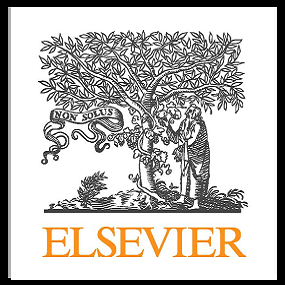ترجمه مقاله ساختارهای پیچیده مالکیت، اداره امور شرکت و عملکرد شرکت – سال 2017


مشخصات مقاله:
عنوان فارسی مقاله:
ساختارهای پیچیده مالکیت، اداره امور شرکت و عملکرد شرکت: بررسی در فرانسه
عنوان انگلیسی مقاله:
Complex ownership structures, corporate governance and firm performance: The French context
کلمات کلیدی مقاله:
اداره امور شرکت، ارزش سهامدار، مالکیت پیچیده، اجرای خصوصی
مناسب برای رشته های دانشگاهی زیر:
مدیریت
مناسب برای گرایش های دانشگاهی زیر:
مدیریت کسب و کار، مدیریت عملکرد، مدیریت مالی، مدیریت استراتژیک
وضعیت مقاله انگلیسی و ترجمه:
مقاله انگلیسی را میتوانید به صورت رایگان با فرمت PDF از باکس زیر دانلود نمایید. ترجمه این مقاله با فرمت WORD – DOC آماده خریداری و دانلود آنی میباشد.
فهرست مطالب:
چکیده
1. مقدمه
2. محیط قانونی فرانسه در معاملات شخصی
3. مرور ادبیات و تدوین فرضیه های مهم
1.3 تناقضات نمایندگی مدیریت/ نمایندگی
2.3 تناقضات مدیریت/ نمایندگی
4. داده و طراحی تحقیق
1.4 داده های توصیفی
2.4 ویژگی های مدل
5. نتایج و بحث
1.5 نقش تعیین کنندۀ سهامدار عمده
2.5 نقش سهامدار بلوکی ردیف دوم
3.5 همگنی سهامداران
6. نتیجه گیری
قسمتی از مقاله انگلیسی و ترجمه آن:
Abstract
This study seeks to understand the leading role played by the blockholders and their true governance mechanism, in the French context, characterised by complex ownership structures. We focus on the role that second-tier shareholders can play in the optimal governance of companies and in their capacity to solve both principal/agent and principal/principal agency conflicts. Using a sample of 2118 observations between 2000 and 2009, we find that second-tier shareholders exercise effective additional monitoring when power is contestable but increase principal/principal agency costs in the presence of a controlling owner. We also show that shareholder homogeneity reduces agency conflicts. Our results demonstrate that the level of control contestability is essential in the understanding of governance mechanisms. Such contestability is to be found simultaneously at institutional level, at the level of the balance of power between blockholders, and according to the nature of the shareholders. Thus, the usual agency theory conclusions are debateable when the legal framework offers little protection of minority shareholders, and when ownership structure is complex and heterogeneous in nature. The study of corporate governance must therefore encompass a twofold analytical perspective, namely, an institutional and a socio-organisational one. The analysis and findings could be particularly useful in assessing corporate governance in the context of several European countries with a similar self-dealing legal environment to the French one, including Italy and Greece.
1. Introduction
The role of ownership structure in resolving agency costs arising from the separation of ownership and control withinfirms has been the focus of extensive literature for many years. Analyses initially focused on principal/agent agency conflictsbetween shareholders and managers (Jensen and Meckling, 1976). It is taken for granted that large shareholders internalisethe costs of monitoring managers’ actions due to their considerable cash flow rights (Shleifer and Vishny, 1986; La Portaet al., 1999). Ownership concentration in the hands of the main shareholder is thus expected to foster the alignment of themanagers’ interests with those of the firm (Demsetz, 1983; Shleifer and Vishny, 1986; Denis et al., 1997). Many studies alsosuggest that certain types of shareholders are more apt at taking on this monitoring role than others, but without drawingfirm conclusions as to which would take pre-eminence. The analysis framework then spread to principal/principal agencyconflicts between majority and minority shareholders due to the potential for collusion between the main shareholder and the manager (Denis and McConnell, 2003; Holderness, 2003) or the appropriation of private control benefits by the mainshareholder to the detriment of the minority shareholders (La Porta et al., 1998) and the firm’s interests.
چکیده
این مطالعه به دنبال درک نقش مهم سهامداران بلوکی و مکانیزم ادارۀ صحیح آن ها، در فرانسه است، که دارای ساختار پیچیدۀ مالکیت هستند. تمرکز ما بر روی نقشی که سهامداران ردیف دوم می توانند در ادارۀ بهینۀ شرکت ها و ظرفیت آن ها، در حل تعارضات مدیریت/ نماینده و مدیریت/ نمایندگی داشته باشند است. با استفاده از نمونۀ 2118 مشاهده بین سال های 2000 و 2009، دریافتیم که سهامداران ردیف دوم، زمانی که قدرت اعتراض دارند نظارت اضافی مؤثر را اعمال می کنند اما هزینه های مدیریت/ نمایندگی برای نظارت کننده، افزایش می یابد. هم چنین، نشان می دهیم که سهامداران همگن، تعارضات نمایندگی را کاهش می دهند. نتایج ما نشان می هد که سطح کنترل رقابت، در فهم مکانیزم اداره ضروری است. چنین رقابتی، به صورت همزمان در سطح سازمانی، در سطح تعادل قدرت بین سهامداران بلوکی، و بر طبق ماهیت سهامداران پیدا می شود. بنابراین، نتایج تئوری نمایندگی معمول، زمانی که چارچوب قانونی، حمایت کمی از نظارت سهامداران را پیشنهاد می دهد و هم چنین ساختار مالکیت، پیچیده و به طور ذاتی ناهمگن است قابل مباحثه هستند. بنابراین مطالعۀ ادارۀ امور شرکت، باید چشم انداز تحلیلی دو گانه یعنی سازمان نهادی و اجتماعی، را شامل شود. تجزیه و تحلیل یافته ها می تواند به صورت خاص در ارزیابی ادارۀ امور شرکت در بافت چندین کشور اروپایی با یک محیط قانونی معاملات شخصی شبیه به فرانسه، ایتالیا و یونان مفید باشد.
1. مقدمه
نقش ساختار مالکیت در تعیین هزینه های نمایندگی ناشی از جدایی مالکیت و نظارت در شرکت ها، تمرکز ادبیات وسیعی را برای سال های زیادی، داشته است. تجزیه و تحلیل در ابتدا بر تناقضات نمایندگی مدیریت/ نماینده بین سهامداران و مدیران (جنسن و مکلدینگ، 1976) تمرکز دارد. مسلّم است که دستۀ بزرگی از سهامداران، هزینه-های نظارت بر عملکرد مدیران را به دلیل حقوق مالی قابل ملاحظه آن ها درون سپاری کرده اند (ویشنی و همکاران 1986، شلیفر و ویشنی 1999). این چارچوب تحلیلی آنگاه تعارضات مدیریت/ نمایندگی بین سهامداران اصلی و سهامداران خرد را به دلیل داشتن پتانسیل تبانی بین سهامداران اصلی و مدیر (دنیس و مکنیل 2003، هلدرنس 2003) یا تصاحب منافع نظارت خصوصی توسط سهامداران اصلی جهت تعیین سهامداران خرد (لاپرتا و همکاران 1998) و سودهای شرکت را گسترش می دهد.




